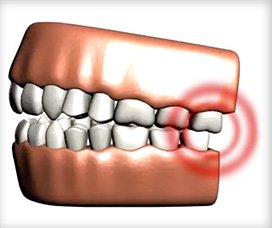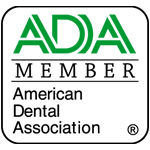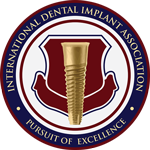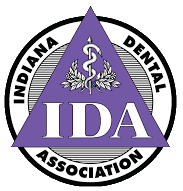
TOOTH ENAMEL RANKS between steel and titanium on the Mohs Hardness Scale. That makes it harder than any other substance in the human body, and it also makes it harder than iron! However, it’s still fairly brittle and very vulnerable to acid erosion, and there are plenty of daily habits we might have that can put it at risk.
This One’s a Nail-Biter (But You Shouldn’t Be)
If you ask most people what the harms of a nail-biting habit are, they’ll probably start with ragged, damaged fingernails, but the effects on teeth and overall oral health can be just as serious, if not more so. Tooth enamel might be harder than keratin (what fingernails are made of), which means enamel is going to win the battle, but over time, keratin will win the war.
Habitual nail-biting can erode, crack, and chip teeth. It can shift them out of proper alignment, resulting in gaps and bad bites. It could even lead to root resorption, or the breakdown of the roots of the teeth! The risk of resorption is also higher in someone with braces. At the same time, the fingernails are the dirtiest part of the hands, and all the dirt and germs under there transfers to the mouth in a nail-biting session. This can lead to gum disease.
Avoid Mouth Breathing Whenever Possible
Thanks to the popular show Stranger Things, “Mouth-Breather” has become a more popular insult in recent years, but there are a lot of good reasons to avoid habitually breathing through your mouth instead of your nose. Mouth breathing can cause a variety of problems, both in the short term and over time:
Lower oxygen levels: nose breathing triggers the production of nitric oxide, a molecule that helps our lungs absorb oxygen. Mouth breathing skips that step, so we can’t get as much out of each breath! That results in less energy for mental and physical tasks.
Dry mouth: the constant airflow in the mouth dries it out, which is a big problem, because saliva is the first line of defense against oral bacteria. Dry mouth leads to chronic bad breath and tooth decay.
Sleep apnea: with habitual mouth breathing comes the increased likelihood of sleep apnea, which makes it difficult to get restful sleep and over time increases the risk of chronic diseases like diabetes and high blood pressure.
Altered bone growth: when the mouth is closed, the tongue provides the right pressure for a child’s dental arches and facial bones to develop well. Mouth breathing removes the support structure and leads to narrow arches, flat features, drooping eyes, and a small chin.
Worse orthodontic problems: narrow dental arches are very likely to feature a lot of crowding. In order to make room for the full set of teeth, orthodontic treatment will usually be necessary.
Let’s Break Those Habits!
Whether you’re personally struggling with nail biting, mouth breathing, or both, or you’ve noticed that your child does, we can help! Just give us a call. We want you to have all the information you need about the ways these habits impact oral health, and we want you to have all the tools you need to fight back!






